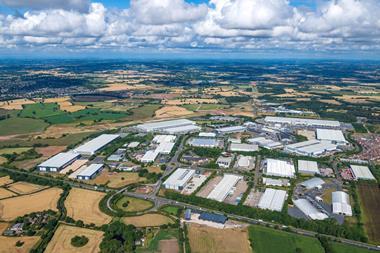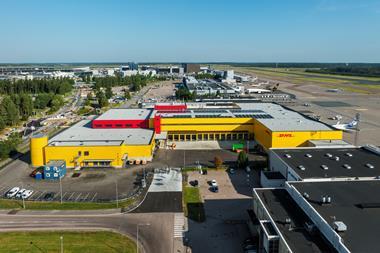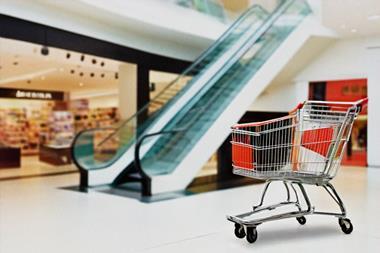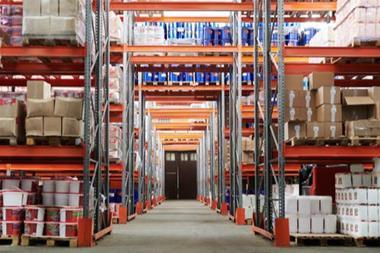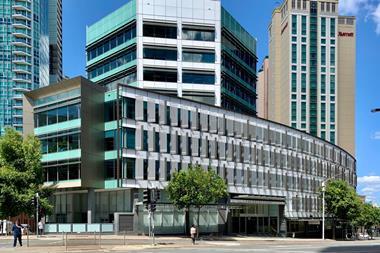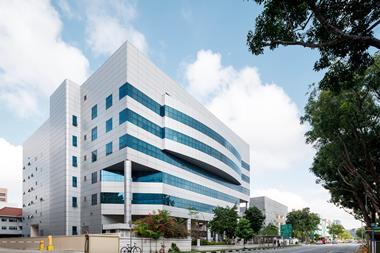Demand for sustainable logistics is surging, fueled by reshaping supply chains, e-commerce growth and onshoring trends, writes Marie Hunt
The European logistics real estate sector has emerged as a standout performer in recent years, offering strong and stable income-generating potential. While traditionally overshadowed by more visually-prominent sectors such as office, retail, and residential real estate, logistics is now gaining the recognition it deserves among investors.

Over the last decade, in response to demand from retail, manufacturing and third-party logistics occupiers, the development of new institutional grade warehouses, distribution centres, fulfilment centres and last-mile delivery hubs has created investible opportunities and created liquidity.
Historically, the scarcity of suitable institutional-grade assets had limited investor participation in the sector. However, in the last few years, there has been a notable shift in investor allocations towards logistics assets with considerable capital chasing investment opportunities in what had been a relatively niche sector.
So why have investors been looking to increase their allocations towards logistics real estate and what are the specific characteristics that make investment in this sector so compelling?
Although every jurisdiction is different, demand in this sector is primarily driven by a combination of factors including favourable demographics, e-commerce growth, increased onshoring and demand for sustainable buildings. A limited supply of new sustainable logistics buildings across Europe has lagged demand which, in turn, has fuelled rental and capital performance.
Demographics
Growing populations naturally consume more goods, all of which have to be stored and transported, fuelling demand for additional real estate. Countries with a young demographic who are more digitally capable have an even higher requirement for logistics space due to the higher incidence of online shopping.
Ecommerce growth
Globally, there has been more than a 100% increase in e-commerce sales in the last 5 years alone, prompting occupiers to seek out more technologically advanced and strategically located logistics facilities to meet evolving consumer expectations.
Regardless of whether sales occur online or in store, goods still need to be transported and as consumers become more demanding in terms of expected delivery turnaround times, the need for additional modern warehouses and distribution centres has increased. The need to accommodate ‘reverse logistics’ to facilitate online returns further adds to this demand.
Onshoring
Events such as Brexit and the Covid-19 pandemic also exposed particular weaknesses in logistics infrastructure in some jurisdictions. For example, in Ireland, the pandemic and Brexit exposed an over-reliance on ‘just-in-time’ supply chain dynamics on the island, with most retail outlets and distribution centres holding limited, or in some cases, no inventory in-country.
Changing trade patterns post Brexit had particularly significant implications in an Irish context. The vast majority of goods ordered online arrived via a port or an airport. When global supply chains were rerouted and customs and tariffs started to apply to goods coming into Ireland via the UK, the deficiencies in Ireland’s logistics infrastructure were evident for all to see.
In addition to regular goods, problems also arose in relation to the storage and distribution of strategic stockpiles of critical goods such as medical supplies and essential manufacturing components. Meanwhile, many occupiers (particularly retailers), realising that consumers are now more demanding in terms of delivery times and wanting to avoid situations of shortages on shelves in stores, began to increase the volume of inventory held in-country and alter traditional distribution and storage patterns.
This increase in nearshoring created a surge in occupier demand for new industrial facilities in the Irish market. With limited availability of units of the required size and configuration within existing schemes, this necessitated the development of modern premises and supported new construction.
Sustainable logistics
Similar to other sectors of the real estate market, the last two years have seen greater bifurcation between the best quality modern accommodation and older logistics facilities. An increasing number of logistics occupiers have net zero commitments.
From a design perspective, building materials have also evolved and modern logistics schemes bear no resemblance to the ‘sheds’ that came before.
The focus is shifting from developing what were traditionally functional buildings in not very pleasant or inclusive environments to a more holistic approach of developing high-specification sustainable facilities in highly landscaped environments rich in amenities and services to benefit all users including local businesses and the wider community.

IPUT Real Estate’s Nexus Logistics Park scheme, which is currently under construction in North Dublin, is an excellent example of the new iteration of logistics developments. Upon completion, the first phase at Nexus Logistics Park will deliver 1.5m sqft of logistics space across nine units.
These units will set a new benchmark for sustainable logistics development, not just in Ireland but in Europe.
This state-of-the-art development will use pioneering glulam construction, which can reduce embodied carbon by up to 30%. The units will also have on-site renewable energy production using roof-mounted photovoltaic solar panels, while daylight cladding will draw natural light into the units.
In addition to its environmental credentials, the development will also include a significant investment in the public realm and amenities for occupiers and the local community. Through the integration of exercise, leisure, and social amenities, the park promotes wellbeing and boosts productivity, enhancing the working environment and strengthening connections between the park and the wider community.
The emphasis on amenitisation and placemaking, is a reflection on evolving occupier expectations for more sustainable and employee focused buildings. Investing in sustainable, strategically located logistics buildings in prime locations will deliver enhanced returns and position investors to outperform the market.
Logistics Outlook
At IPUT Real Estate, we remain bullish on logistics long-term outlook, with the sector’s strong fundamentals supporting its growth and performance.
Our ambition is to increase our fund’s allocation to logistics to more than 30% over the coming years on the basis that we believe that the sector has potential to be defensive and somewhat resistant to cyclical shifts in performance.
Regardless of short-term disruption as a result of any potential tariffs, the expectation is that a combination of demographic, economic, technological, and structural elements will continue to make investment in the logistics sector an increasingly compelling in the medium to long-term.
To read the latest IPE Real Assets magazine click here.





